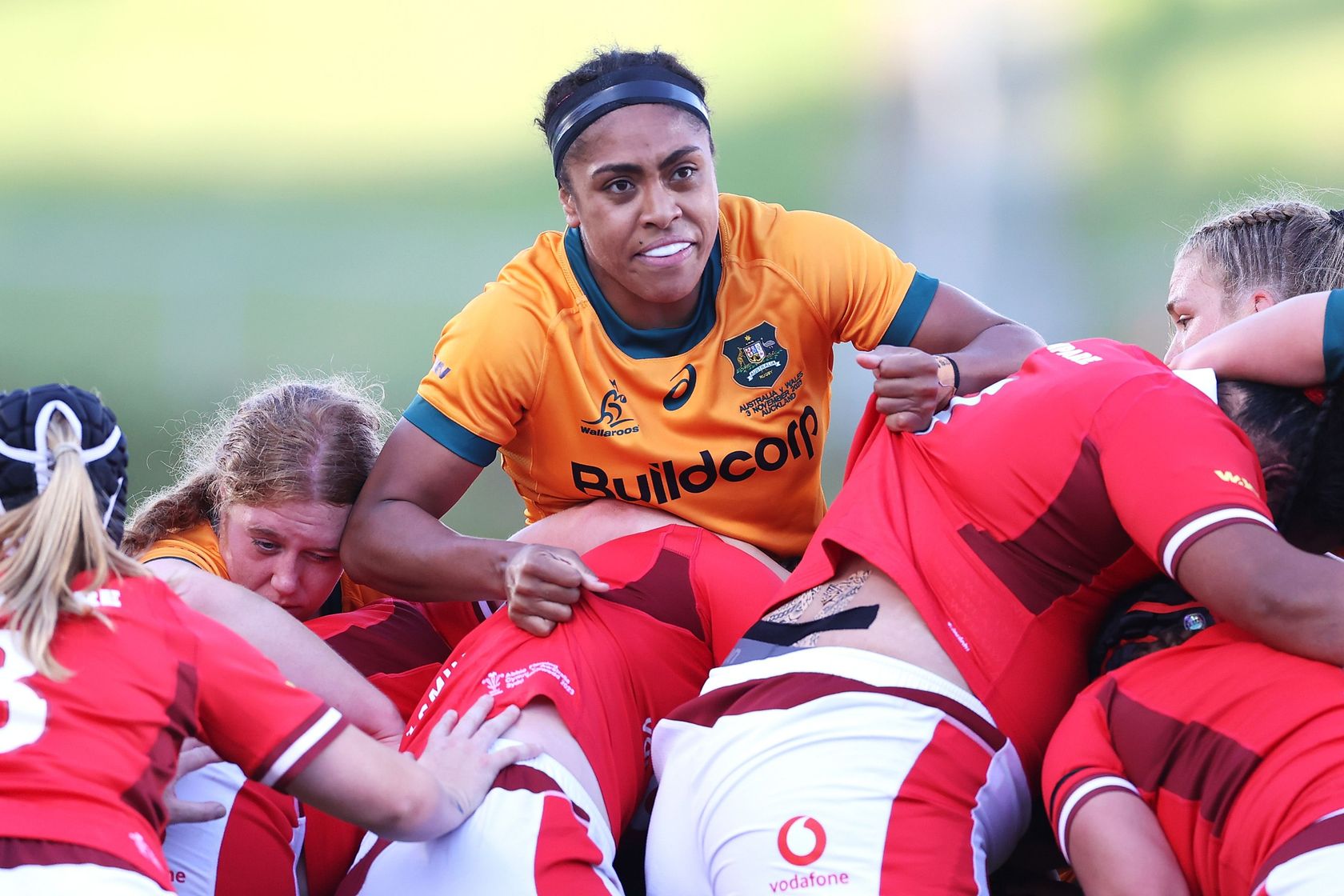Players Matters - Janvier 2025

Janvier 2025
Alors que nous commençons 2025, il vaut la peine de revenir sur l’année passée en ce qui concerne la santé des joueurs, domaine dans lequel un certain nombre d’initiatives ont été mises en œuvre, un certain nombre d’opportunités identifiées et, pour être honnête, de nombreux défis ont été rencontrés.
On se souviendra de l’année dernière, du moins du point de vue qui est le nôtre dans le cadre de la santé des joueurs, comme l’année où pour la première fois – tous sports confondus – la technologie des protège-dents instrumentés a été introduite pour soutenir le bien-être et la performance. C’est ce qui s’est produit lorsque nous avons imposé l’utilisation de ces protège-dents IMG pour que les joueurs aient accès à l’évaluation HIA hors du terrain, avec des alertes intégrées au processus de dépistage comme moyen d’identifier et de dépister les joueurs qui avaient subi des événements d’accélération de la tête importants. Le Tournoi des Six Nations masculin a été le premier tournoi dans le cadre duquel cela s’est produit (bien qu’en 2023, ce système avait été testé dans les compétitions WXV), d’autres tournois ayant suivi, le plus récent étant la série SVNS.
Le processus a été à la fois fascinant et stimulant. Cela n’allait jamais être simple, et nous ne nous attendions pas à ce que ce soit facile, mais nous avons la ferme conviction que si les bénéfices de la technologie rendent les eaux parfois agitées, il vaut la peine de s’embarquer dans ce genre d’aventures, et les IMG seront utilisées pendant encore très longtemps.
On nous rappelle constamment leur valeur lorsque des études associent des impacts à la tête estimés à une probabilité accrue de développer des maladies neurodégénératives plus tard dans la vie. L’une des limites de ces études est qu’elles n’ont jamais mesuré directement le nombre et l’ampleur des impacts à la tête et, par conséquent, elles les estiment en fonction de la durée de la carrière d’un joueur, de son poste ou d’extrapolations à partir d’autres cohortes similaires. Nous sommes maintenant, pour la première fois, en mesure de quantifier l’exposition aux impacts à la tête, et bien que la « récompense » prenne du temps à être reçue, il viendra un moment au cours de la prochaine décennie où nous serons en mesure d’explorer plus précisément ces associations.
Nous accumulons également des données à un rythme jamais vu auparavant dans ce domaine. À ce jour, nous avons atteint un taux de conformité d’environ 90 % et avons recueilli environ 250 000 points de données, dont 150 commotions cérébrales. Chaque contact « compte » désormais pour notre compréhension de cette notion d’impact à la tête, ce qui nous permet d’explorer les différences entre les sexes, entre les postes, chez les joueurs d’un match à l’autre, et comment les accélérations de la tête sont affectées par les comportements des joueurs, les changements de règles et l’exécution technique.
Un autre domaine où les IMG offriront une valeur ajoutée concerne notre compréhension de la façon dont les entraînements peuvent être comparés aux matchs en tant que source de charge d’impact à la tête. Un article publié récemment par des collaborateurs à travers le Royaume-Uni a montré que chez les joueurs de l’élite (hommes), un match typique équivaut à environ cinq semaines d’entraînement normal en termes de nombre total d’accélérations de la tête provoquées. Chez les féminines, ce rapport est d’environ 1:8, c’est-à-dire que pour chaque accélération de la tête au cours d’une semaine d’entraînement normal, il y en a huit dans un match typique. Une fois que l’on observe les accélérations de tête de plus grande magnitude, le rapport augmente encore plus : les matchs exposent les joueurs à des accélérations de la tête plus importantes que l’entraînement. On peut le voir sur la figure ci-dessous, où les joueurs sont représentés à gauche et les joueuses à droite. De toute évidence, les impacts à la tête en match sont nettement plus nombreux que les impacts à l’entraînement, et plus l’ampleur augmente (à droite et en haut de chaque graphique), plus il est probable que les accélérations de la tête se produisent pendant les matchs, et non à l’entraînement.

Cela signifie que les matchs doivent rester un axe d’intervention important pour réduire la charge d’impact à la tête des joueurs, car ils représentent la majeure partie (80 %) des impacts à la tête subis par les joueurs. Cela ne veut pas dire que l’entraînement apporte une contribution négligeable pour ce qui est de cette charge, et il ne faut certainement pas le négliger ce domaine : 20 % des impacts se produisent dans le cadre des entraînements qui sont théoriquement contrôlables. Notre défi est de trouver un équilibre entre les approches pour permettre une réduction de la charge en match et à l’entraînement.
Ce qui complique plus encore cette situation est que nous ne savons pas quelle devrait être la « dose » minimale à l’entraînement pour minimiser le risque en match ; si l’entraînement est considéré comme une préparation pour les matchs, alors il a un rôle préventif, et trop peu d’entraînement peut augmenter le risque en match autant que trop d’entraînement augmente directement le risque. Trouver cet équilibre sera crucial au fur et à mesure de notre progression.
Ce sera probablement l’un des principaux sujets de conversation en 2025, qui débutera avec notre réunion Shape of the Game, un rassemblement multipartite qui rassemble joueurs, entraîneurs, officiels de match, dirigeants et médecins pour examiner ces questions, ainsi que d’autres qui ont des implications sur la santé des joueurs.
Le défi persistant est de mettre en œuvre des initiatives pour la santé des joueurs sans compromettre indûment l’intégrité du jeu. L’ADN de notre sport et les objectifs de performance de ses joueurs, entraîneurs et dirigeants ne peuvent être ignorés, et nous sommes très conscients de l’importance de travailler avec toutes les parties prenantes de la performance pour obtenir la meilleure adhésion possible en faveur de la santé des joueurs. En fin de compte, le sport est sain lorsqu’il est à la fois populaire et sûr, et ces deux impératifs peuvent soit être considérés comme opposés l’un à l’autre (comme c’est le cas par certains), soit, ce qui a notre préférence, reconnaître le potentiel de tensions entre ces deux impératifs afin que nous puissions naviguer et surmonter les obstacles, en collaborant pour élaborer des solutions pragmatiques et efficaces pour la santé.
2024 : Une année charnière pour les services de santé cérébrale
Nous sommes fiers des incroyables progrès réalisés pour faire progresser le soutien aux joueurs par le biais des services pour la santé du cerveau (ou cérébrale) en 2024. Cette année a marqué le lancement de la plateforme en Irlande, en Australie et, plus récemment, au Pays de Galles, autant d’étapes importantes pour la communauté du rugby.
Le Service Santé du cerveau est le premier du genre dans le domaine du sport, offrant aux joueurs retraités une plateforme en ligne complète pour évaluer et gérer leur santé cérébrale. Le service se concentre sur l’identification des facteurs de risque modifiables de la démence, en fournissant des informations et des conseils personnalisés pour optimiser le bien-être cognitif, psychologique et médical.
Depuis son lancement en Irlande, en juin 2024, cette plateforme a accueilli plus de 100 joueurs à la retraite qui prennent désormais des mesures proactives pour soutenir leur santé cérébrale et leur bien-être général. Cette étape importante reflète la prise de conscience croissante de World Rugby et son engagement à soutenir les joueurs au-delà de leur carrière sur le terrain.
Nous sommes ravis de poursuivre notre expansion avec des lancements prévus en Afrique du Sud, en Écosse et en Nouvelle-Zélande au début de 2025. Ces déploiements permettront à un plus grand nombre de joueurs retraités dans le monde d’avoir accès à ce service innovant.
Le futur…
L’année 2025 nous permettra également de suivre une Coupe du Monde de Rugby, la Nouvelle-Zélande visant à défendre le titre qu’elle a remporté à domicile en 2022. La croissance du rugby féminin, qui est l’un des plus passionnants développements que notre sport a connus, a entraîné une énorme augmentation d’activités et projets dans la recherche et le soutien pour la santé des joueuses. L’année 2025 sera l’occasion de présenter cette recherche et ses applications, y compris des modules éducatifs pour soutenir la santé pelvienne, la grossesse et le retour au jeu, ainsi que la réduction des commotions cérébrales.
Le rugby étant le rugby, nous ne doutons pas que 2025 apportera son lot d’autres défis et opportunités, et nous sommes prêts à nous engager avec toutes nos parties prenantes pour tenter de les surmonter. Merci pour vos contributions à la discussion en 2024, et pour votre intérêt continu pour la santé des joueurs. Nous attendons avec impatience une autre année chargée en 2025.
Prof Éanna Falvey








